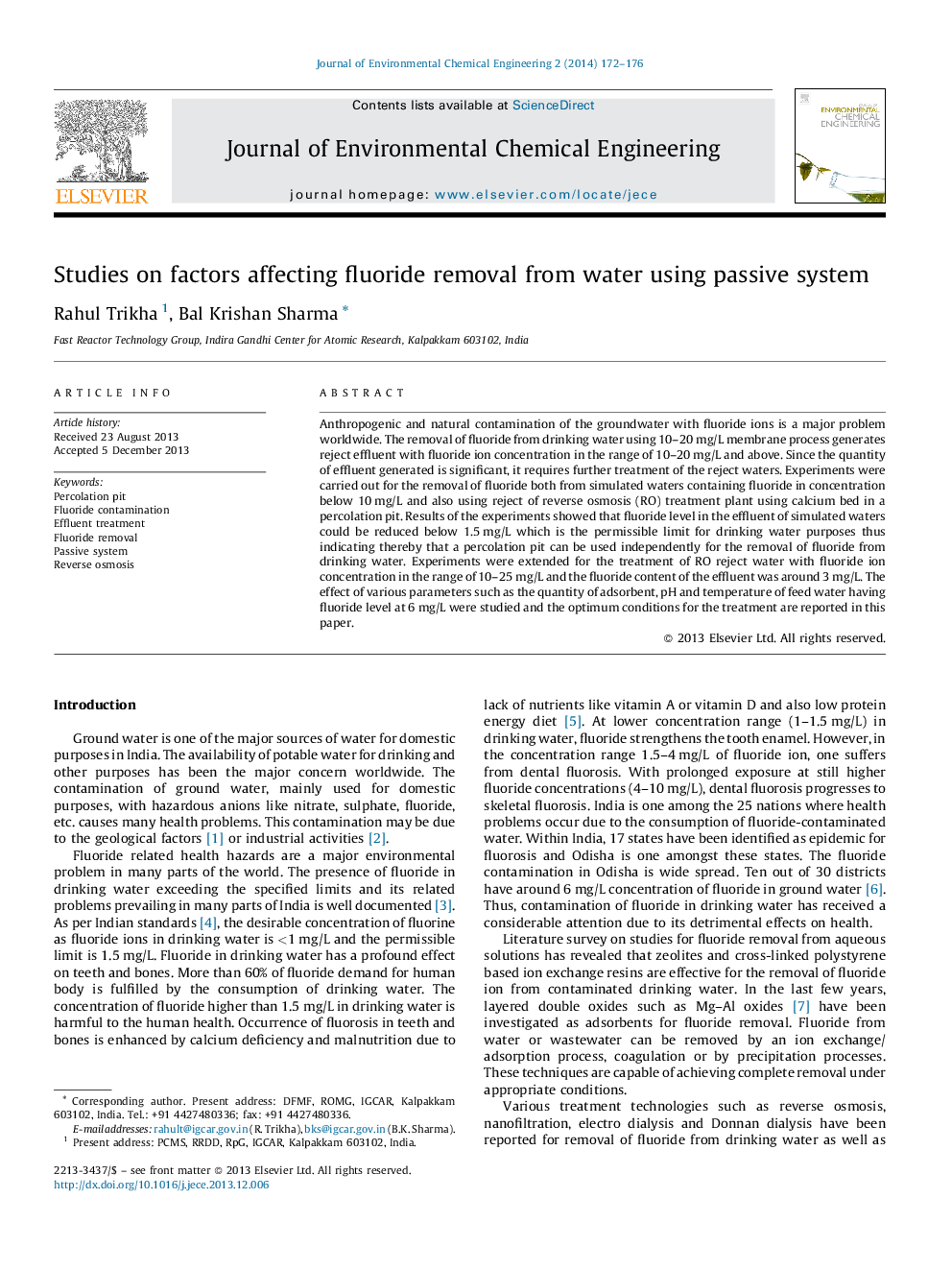| Article ID | Journal | Published Year | Pages | File Type |
|---|---|---|---|---|
| 222134 | Journal of Environmental Chemical Engineering | 2014 | 5 Pages |
•The decrease in concentration of fluoride depends on initial feed concentration.•The removal of fluoride was found to be effective in the pH range 6–7.•The increase in quantity of adsorbent showed increased rate of fluoride removal.•Eco-friendly method with easy operation and maintenance.•Easy to reduce fluoride levels below 1.5 mg/L using optimized parameters.
Anthropogenic and natural contamination of the groundwater with fluoride ions is a major problem worldwide. The removal of fluoride from drinking water using 10–20 mg/L membrane process generates reject effluent with fluoride ion concentration in the range of 10–20 mg/L and above. Since the quantity of effluent generated is significant, it requires further treatment of the reject waters. Experiments were carried out for the removal of fluoride both from simulated waters containing fluoride in concentration below 10 mg/L and also using reject of reverse osmosis (RO) treatment plant using calcium bed in a percolation pit. Results of the experiments showed that fluoride level in the effluent of simulated waters could be reduced below 1.5 mg/L which is the permissible limit for drinking water purposes thus indicating thereby that a percolation pit can be used independently for the removal of fluoride from drinking water. Experiments were extended for the treatment of RO reject water with fluoride ion concentration in the range of 10–25 mg/L and the fluoride content of the effluent was around 3 mg/L. The effect of various parameters such as the quantity of adsorbent, pH and temperature of feed water having fluoride level at 6 mg/L were studied and the optimum conditions for the treatment are reported in this paper.
Graphical abstractFigure optionsDownload full-size imageDownload as PowerPoint slide
